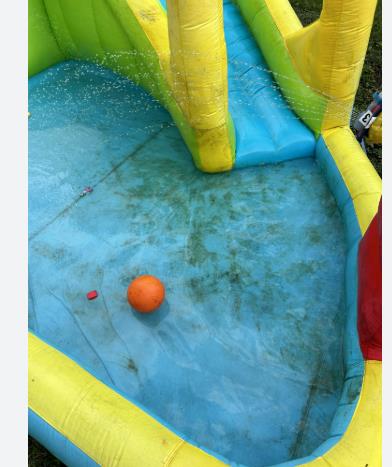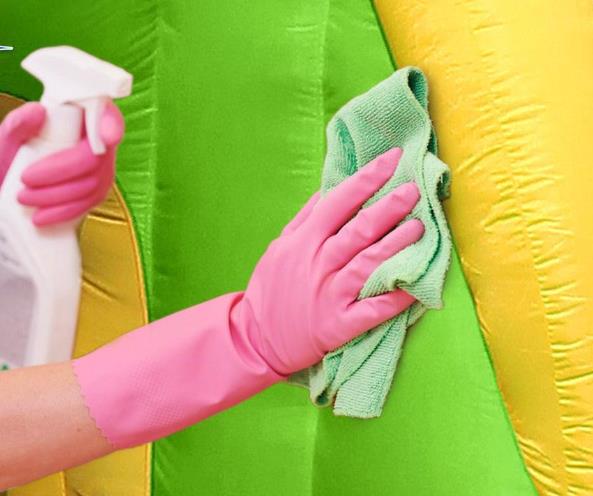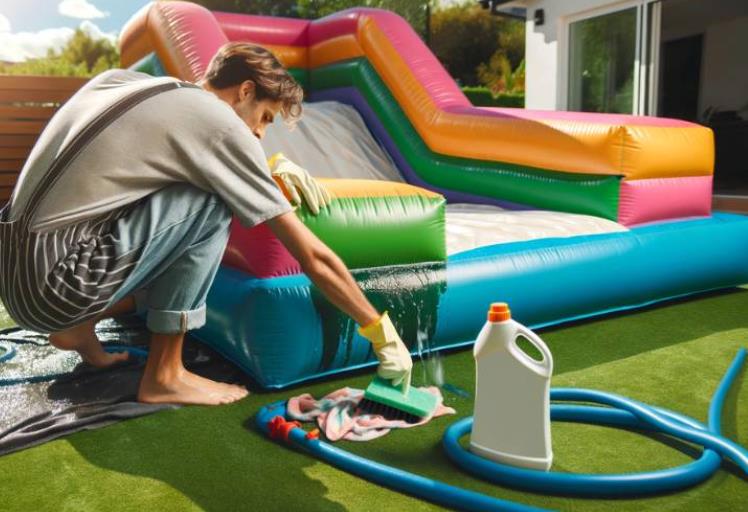Comprehensive Inflatable Bouncer Maintenance Protocol
I. Advanced Preparation
Environmental Assessment
Ideal conditions: 18-28°C with <50% humidity
Avoid cleaning when the UV index exceeds 8 (accelerates material degradation)
Morning cleaning is recommended for optimal drying time
Toolkit Enhancement

Essential additions:
Digital moisture meter (verify complete dryness)
Infrared thermometer (check surface temperature before cleaning)
Color-coded microfiber cloths (red for disinfecting, blue for rinsing)
II. Scientific Cleaning Methodology
Phase 1: Pre-Cleaning Inspection
▶ Conduct a leak test using a soapy water solution
▶ Document existing damages with smartphone photos
▶ Measure material thickness at stress points (knees/elbows of the structure)
Phase 2: Multi-Stage Cleaning Process
Dry Maintenance Cycle
Use a HEPA-filter vacuum with a soft brush attachment

Compressed air for crevices (max 30 PSI pressure)
Wet Cleaning System
3-Bucket Technique:
Pre-rinse (remove loose debris)
Detergent wash (neutral pH 6.5-7.5)
Sanitizing rinse (50 ppm chlorine solution)
Specialty Treatments
UV protection: Apply silicone-based conditioner annually
Odor elimination: Activated charcoal sachets in storage
III. Remote Quality Control
Digital Verification Steps
Request time-stamped photos of:
Water bead test (should form a 110° contact angle)
Stitch tension check (no >2mm gap allowance)
Augmented Reality Assistance
Share QR codes linking to:
360° cleaning demonstration videos
Interactive material compatibility charts
IV. Extended Maintenance Program
Seasonal Deep Cleaning
Spring: Enzymatic treatment for organic stains
Monsoon: Anti-fungal coating application
Winter: Plasticizer replenishment
Usage-Based Care Schedule
Frequency: Commercial Use, Home Use, Daily, Brush down, Visual check, Weekly, Disinfect, Spot clean, Monthly, Full inspection clean
V. Enhanced Safety Protocols

Electrical Safety
Maintain 3m clearance from power sources during wet cleaning
Use GFCI-protected equipment
Chemical Handling
SDS sheets should be accessible for all cleaning agents
Emergency rinse stations are required for commercial operations
VI. Professional Service Indicators
Seek expert help when:
Material thickness reduction >15%
Persistent odor after 72h of ventilation
Visible polymer crystallization
